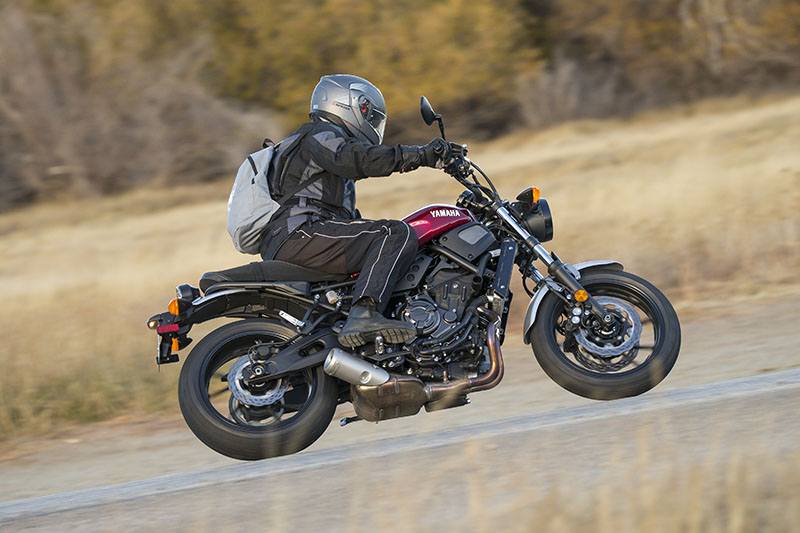
When Yamaha’s 2014 FZ-09 triple was announced, anticipation of its arrival was so high that eager buyers lined up to put deposits down on the $7,990 bike sight unseen. With 105 horsepower and 60 lb-ft of torque at the rear wheel in a 413-pound package, the FZ-09’s bang-for-the-buck was off the charts, and its fresh muscular styling made it a standout among other naked bikes struggling for identity. It’s still Yamaha’s best-selling street bike, and returns for 2018 with the same MT-09 designation it has in other countries.
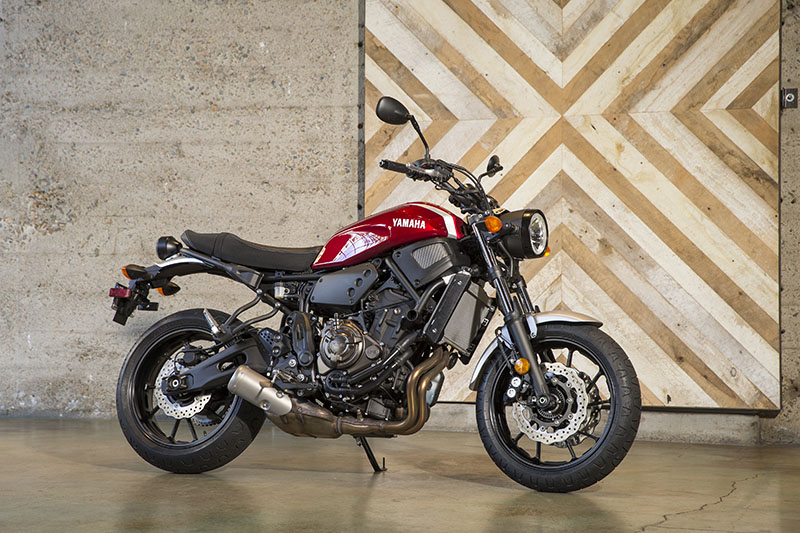
The next step in the middleweight FZ progression was the lighter, lower priced FZ-07 twin, which came along a year later with a lot less fanfare, but there’s a hefty contingent of us motoscribes who like it better than the FZ-09. While its compact 689cc parallel twin makes 69 horsepower and 48 lb-ft of torque at the rear wheel to the FZ-09’s 105 horsepower/60 lb-ft, the FZ-07 is 15 pounds lighter and has much more linear, predictable power delivery, with most of its torque on tap before the engine is even spinning 6,300 rpm. It’s a ton of fun to ride and is a perfect commuter and weekend playbike, especially at $7,599 for the 2018 model, which is now called the MT-07 and gets a stylish refresh, standard ABS, adjustable damping on the rear shock and a longer seat.
Read our 2015 Yamaha FZ-07 review
Two years after the FZ-09 was introduced, Yamaha capitalized on the platform’s popularity by introducing a version for fans of retro bikes, the 2016 XSR900. With its round headlight, more traditional tank shape with knee cutouts and other throwback styling licks, if you squint a bit you can make comparisons to Yamaha’s own XS750 triple from the 1970s.
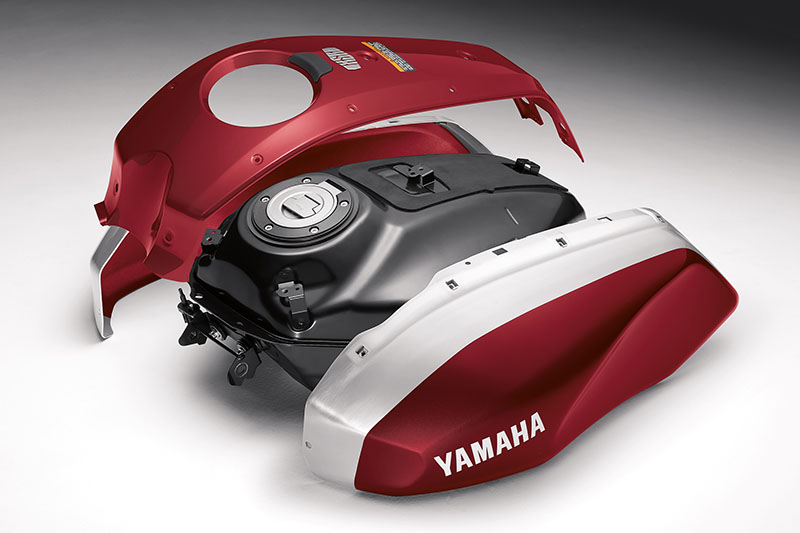
The neo-retro XSR900 proved to be a popular addition to the FZ family, so Yamaha has likewise followed up the FZ-07 with a new XSR700 version for 2018. At its heart is the same 689cc parallel twin with a 270-degree Crossplane-concept crankshaft and gear-driven counterbalancer, which gives the liquid-cooled, DOHC 8-valve engine plenty of twin-cylinder character and a broad powerband without excessive vibration. The XSR700 also has the same backbone-type steel frame and steel swingarm that loops up over the stubby muffler on the right as the FZ/MT-07, with a new removable seat subframe loop in back for easier customization. Changes to the KYB fork and horizontal-layout rear shock with 9-position adjustable spring preload give the XSR700 a firmer ride than the 2017 FZ-07—spring rates are up 6 percent in front and 11 percent in back, and damping rates have been increased as well.
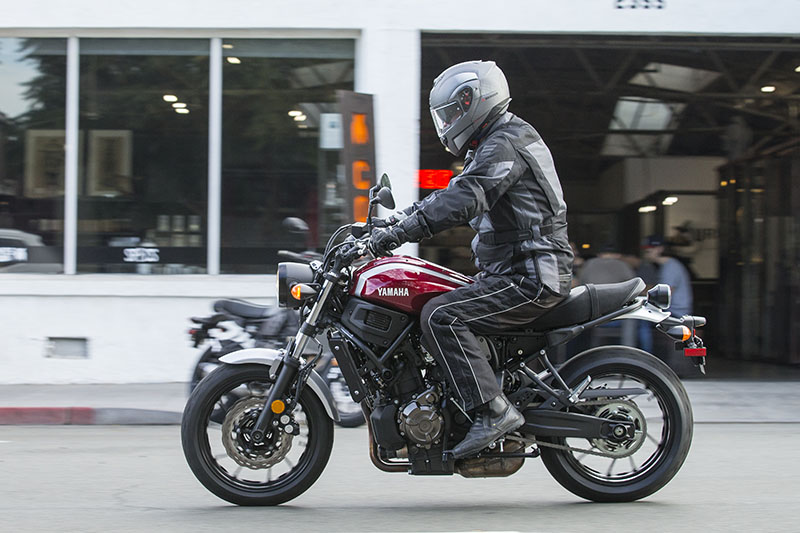
This time Yamaha reached back to its iconic XS650 line of twins from the 1970s for styling inspiration. Round-themed components like the headlight, taillight and single LCD instrument replace the MT-07’s angular units, and the molded fuel tank wears plastic covers that give it a sleeker, more traditional shape. The covers are removable and easily replaced with custom ones, too. There’s lots of room for personalization on this bike, in fact, and Yamaha already has a ton of accessories ready to go, like a more traditional-looking flat seat, fork gaiters and a front number plate.
Check out Yamaha’s Yard Built Sport Heritage custom bike page here
For a more relaxed seating position with increased legroom, the XSR700 also gets a higher, wider tapered aluminum handlebar and a cushier 10mm-taller seat, though the seat is still narrow at the front so I was able to get my feet down easily. With less weight on your hands riding the XSR700 is a less urgent, more comfortable experience, and I found I could spend all day on the bike just by shifting back and forth on the seat. At higher speeds the taller bar means you have to fight the windblast a bit more with your arms, but slow it down to less than 70 mph or so and that issue goes away. The engine provides the same satisfying, easy-to-use torquey power it always has, with just a hint of vibration creeping into the grips at high rpm. Shifting the 6-speed transmission is smooth and easy, with only moderate effort required at the clutch lever.
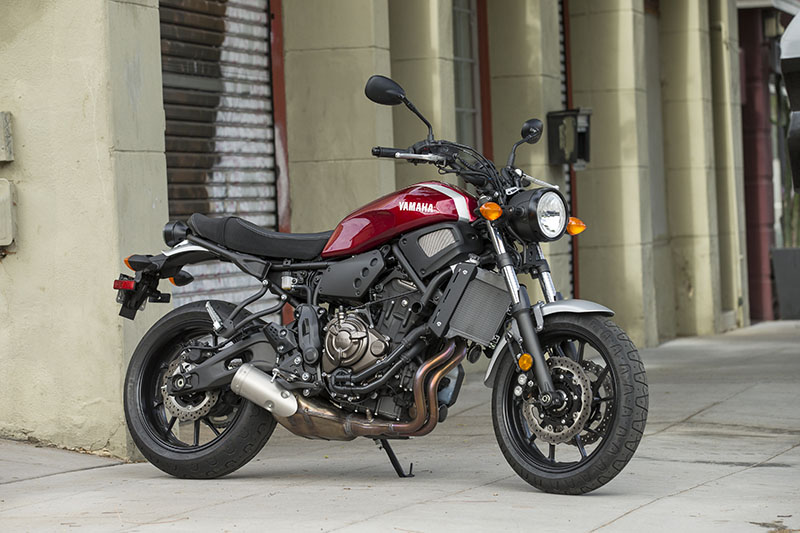
The XSR700’s new suspension rates carry over to the 2018 MT07 as well and are definitely an improvement, with just enough firmness for spirited riding with my 200-pound bulk aboard yet the bike remains compliant and comfortable on the hirsute commute. The fork does dive a lot when you clamp on the front binder, and some may opt for stiffer fork springs. Part of that is the exceptional strength of the front dual disc brakes, which have wave-type rotors, powerful Advics opposed 4-piston calipers and an adjustable brake lever. The rear brake has a wave rotor and 1-piston floating caliper and is strong enough, though the pedal travels a lot on our test bike before it bites. ABS is standard but is not switchable.
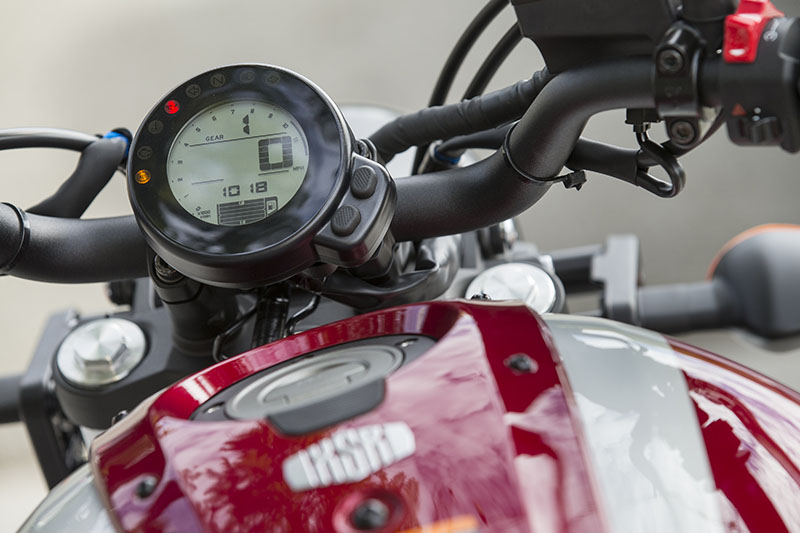
On the introductory ride in San Diego, California, we flogged the XSR700 around the city in the morning and then carved up the mountain roads leading to Mt. Laguna in the afternoon, and the next day I rode the bike on interstates to the first Progressive International Motorcycle Show of the year in Long Beach before heading home, a total of about 400 miles. I loved the XSR700’s light, flickable handling, and the heritage-style Pirelli Sportscomp tires it wears from the factory stick well and look great. According to the multi-function display (speedo, tach, gear indicator, fuel gauge, ambient temperature, clock and tripmeters) the bike delivered 51.7 mpg average, giving it a range from the 3.7-gallon tank of about 191 miles, and I was hard on the gas most of the time—though the XSR700 weighs about 20 pounds more than the FZ-07, we’ve seen fuel economy from this engine in the low 60s.
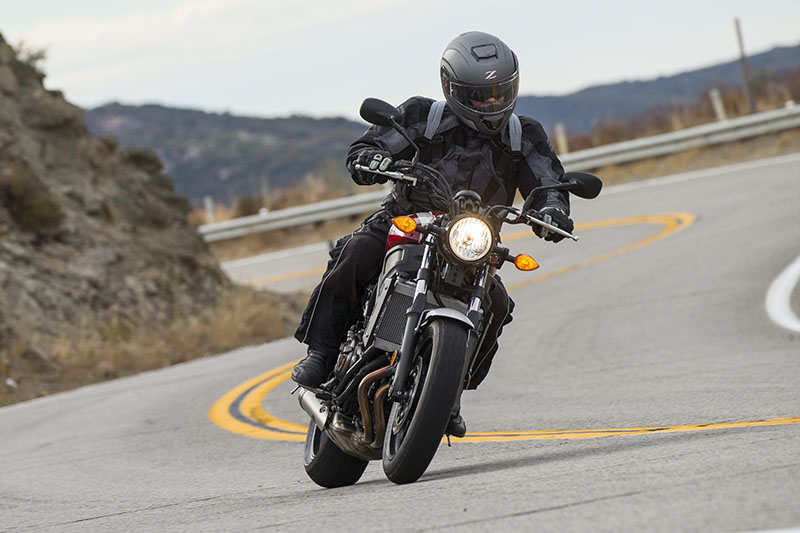
From a functional standpoint, the 2018 Yamaha XSR700 may be the best bike in the FZ/MT series. It has enough easy-to-use midrange power for all kinds of solo riding, revs out hard to its 10,000-rpm redline when desired and is light and a blast to ride. At $8,499 it costs $900 more than the MT-07, but its increased comfort and more traditional styling is more to my liking. I lusted for an XS650 back in the day, but if I had one now it probably wouldn’t get ridden very much. With the XSR700 you get just enough of that heritage to pluck your heartstrings, with plenty of contemporary performance, practicality and reliability.
Check out more new bikes in Rider’s guide to new/updated 2018 motorcycles
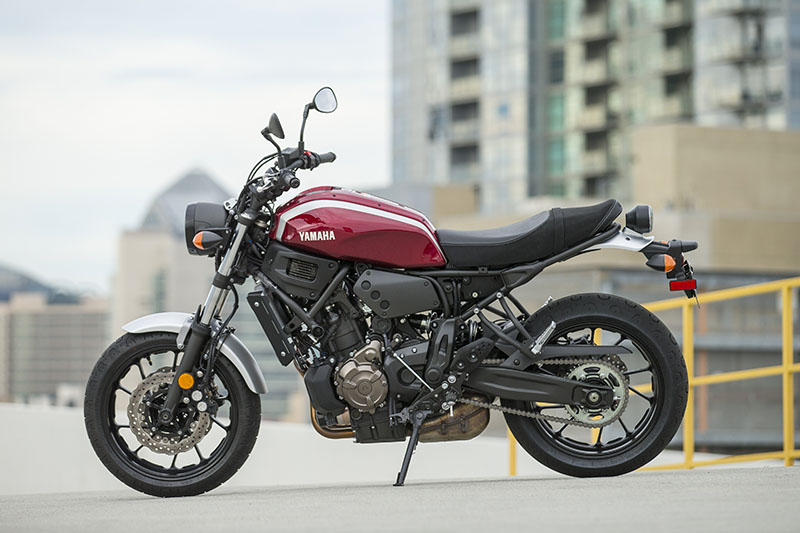
2018 Yamaha XSR700
Base Price: $8,499
Warranty: 1 yr., unltd. miles
Website: yamahamotorsports.com
Engine
Type: Liquid-cooled, transverse parallel twin
Displacement: 689cc
Bore x Stroke: 80.0 x 68.6mm
Compression Ratio: 11.5:1
Valve Train: DOHC, 4 valves per cyl.
Valve Insp. Interval: 26,600 miles
Fuel Delivery: DFI w/ 38mm throttle bodies x 2
Lubrication System: Wet sump, 2.75-qt. cap.
Transmission: 6-speed, cable-actuated wet clutch
Final Drive: O-ring chain
Electrical
Ignition: Electronic
Charging Output: 410 watts max.
Battery: 12V 8.6AH
Chassis
Frame: High-tensile steel diamond, steel beam-type swingarm
Wheelbase: 55.3 in.
Rake/Trail: 25.0 degrees/3.5 in.
Seat Height: 32.1 in.
Suspension, Front: 41mm fork, non-adj., 5.1-in. travel
Rear: Single link-type shock, 9-position adj. preload, 5.1-in. travel
Brakes, Front: Dual 282mm floating discs w/ opposed 4-piston calipers
Rear: Single 245mm disc w/ 1-piston floating caliper
Wheels, Front: Cast, 3.50 x 17 in.
Rear: Cast, 5.50 x 17 in.
Tires, Front: 120/70-ZR17
Rear: 180/55-ZR17
Wet Weight: 418 lbs.
Load Capacity: 379 lbs.
GVWR: 789 lbs.
Performance
Fuel Capacity: 3.7 gals., last 0.7 gal. warning light on
MPG: 86 PON min. (avg) 51.7
Estimated Range: 191 miles
Indicated RPM at 60 MPH: 4,100








Updated 11/20/17 with measured wet weight and latest fuel economy data.
I have 28” inseam – will I be able to set my feet on the ground?
The xsr 700 is nothing like the mt 07
It’s tuned totally different
The xsr has almost no vibration in all six gears
In fifth and sixth you can take it down to 25 mph and pull away strong
The seat sucks, it needs aftermarket
A yoshi headder makes it the best sounding
Bike I ever heard
Needs fatter grips
A little taller wind screen
THIS IS THE NICEST BIKE I HAVE EVER RIDDEN
I WANT ONE